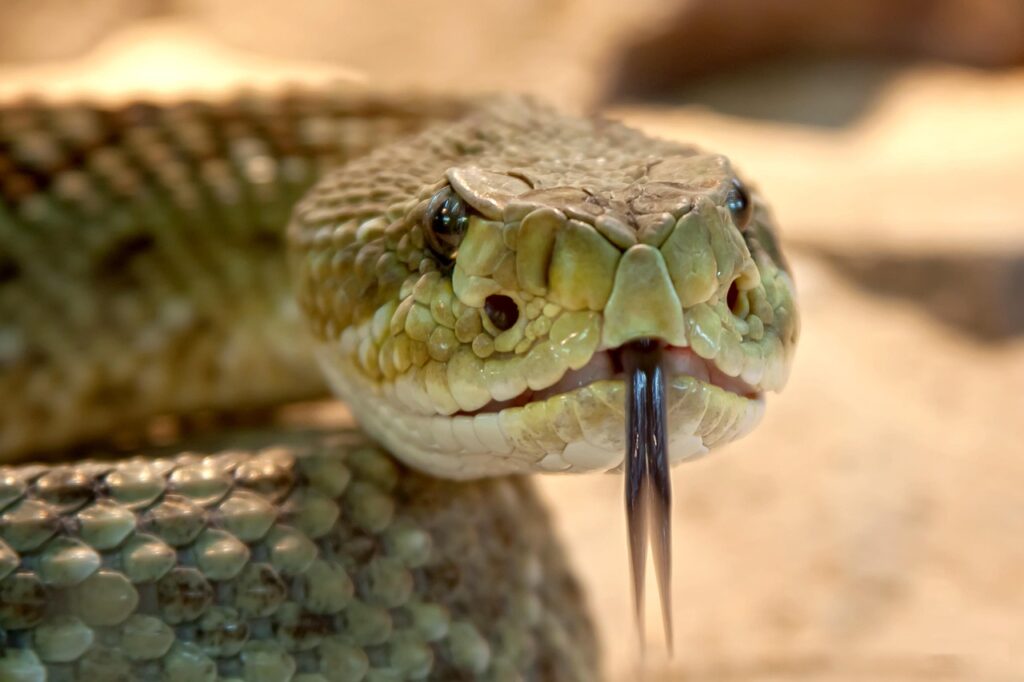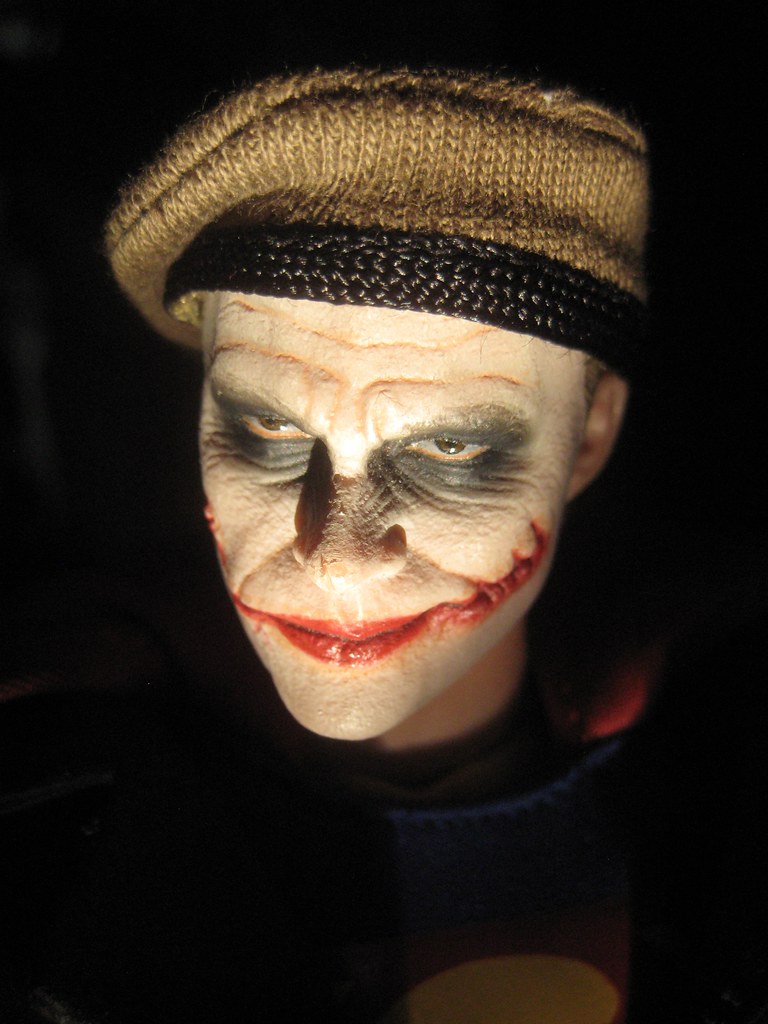
The Joker. The mere mention of the name conjures images of chaotic laughter, menacing smiles, and a profound, unsettling madness that has plagued Gotham City’s Dark Knight for decades. From his debut in 1940’s Batman #1, inspired by Conrad Veidt’s character in “The Man Who Laughs,” the Clown Prince of Crime was initially intended for a fleeting existence. However, creators Bill Finger, Jerry Robinson, and Bob Kane quickly recognized the special character they had on their hands, saving him from an early demise and cementing his place as one of comic book history’s most compelling villains.
He wasn’t always an A-list threat, experiencing periods of reduced prominence, particularly after the 1960s TV show potentially overexposed him. Yet, a resurgence in 1973 with Dennis O’Neil and Neal Adams’ “The Joker’s Five-Way Revenge” propelled him back to the forefront, solidifying his spot at the top of Arkham Asylum’s most infamous residents. Since then, the Joker has remained a mainstay in Batman adaptations, captivating audiences and challenging actors to delve into his complex psyche.
Indeed, few villains on the big screen capture our hearts or nightmares quite like the various performances of the Joker. His multifaceted nature, a blend of comedic timing, bubbling menace, suave showmanship, and violent outbursts, demands a unique set of skills from anyone who dares to don the white face paint. With multiple actors having won Oscars for the role and wildly successful stand-alone movies like “Joker” and “Joker: Folie à Deux,” the character has been continually reinvented, with each new iteration adding a distinctive spin to his unique brand of mixing punches with punchlines. We embark on a journey to critically rank these major interpretations, from those that struggled to capture the essence of chaos to those who etched themselves into the annals of cinematic history.
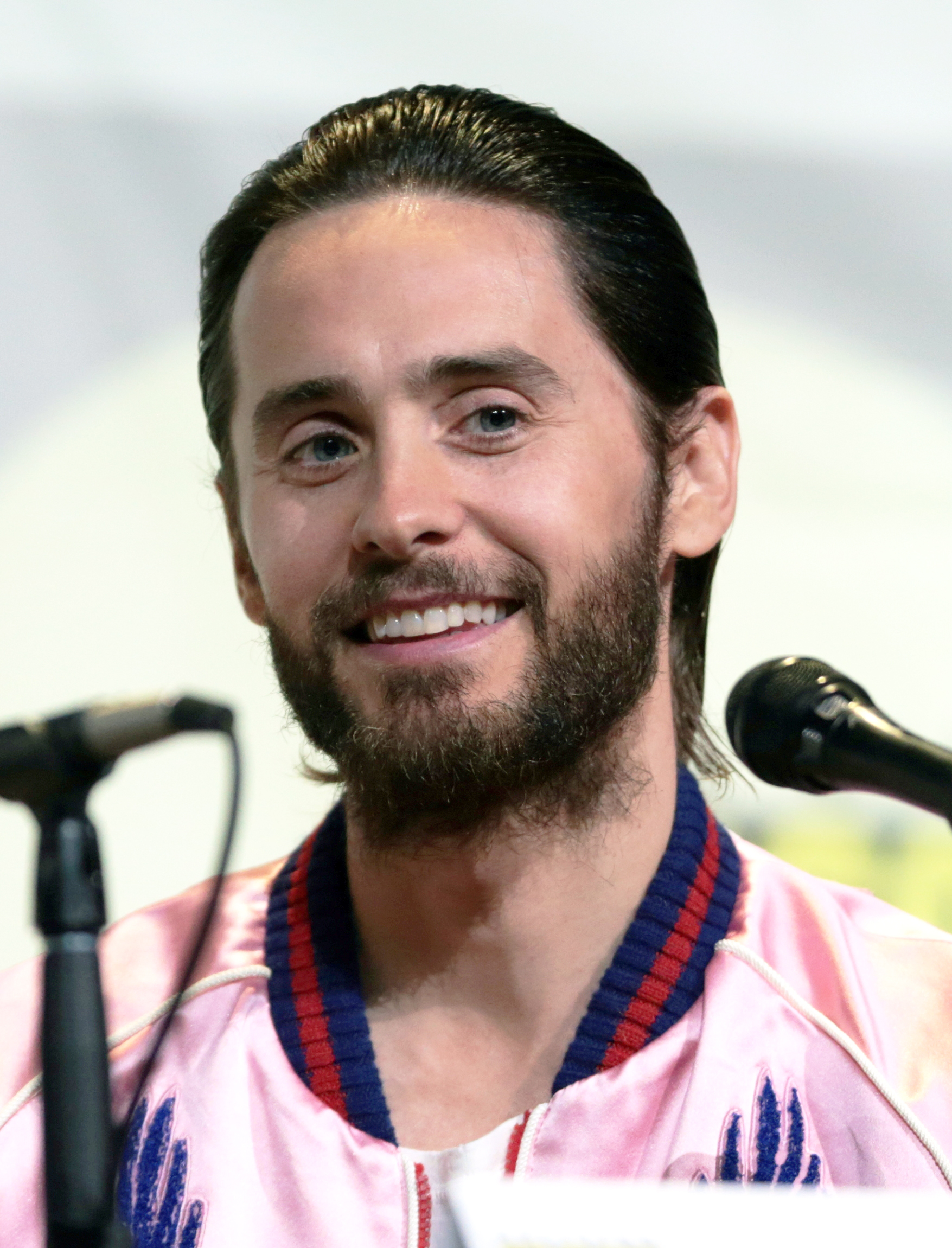
1. **Jared Leto – *Suicide Squad* / *Zack Snyder’s Justice League**
Jared Leto’s portrayal of the Joker has undeniably become one of the most polarizing and widely derided iterations in the character’s storied history. His inclusion in 2016’s *Suicide Squad* and a later cameo in *Zack Snyder’s Justice League* was met with significant fan backlash, stemming largely from baffling design choices and a perceived fundamental misunderstanding of the character. The “horrible tattoos” and “shiny grill” contributed to a look that many felt was trying too hard, rather than authentically menacing.
Critics often pointed to a general sense of unfocused performance, suggesting that Leto “throws everything at the wall in the hope that something would shock viewers.” His take was described as an “unfocused take,” with a strange emphasis on superficial shock value, such as a “twisted” forehead tattoo or cooing about hurting Harley Quinn. This approach starkly contrasted with previous, more nuanced portrayals and left many viewers cold.
The context suggests that even when playing “a regular dude,” Leto “confuses more acting with good acting,” a flaw that was magnified when attempting to embody the chaotic brilliance of the Joker. His character felt more like “a gangster or an abusive boyfriend” than the Clown Prince of Crime. The “vibes” were notably “off,” failing to capture the unique blend of theatricality and terrifying intellect inherent to the Joker.
Following Heath Ledger’s Oscar-winning performance was always going to be an “uphill battle,” but Leto’s version struggled to carve out its own impactful identity. While his “erratic behavior and slimy menace” commanded attention in fleeting moments, a “stilted script” often made his inclusion feel like an afterthought. Ultimately, this iteration serves as a prime example of how creative decisions, even those from acclaimed filmmakers, can sometimes miss the mark for such an iconic villain.

2. **Troy Baker – *Batman: Arkham Origins**
Following in the footsteps of a legendary voice actor like Mark Hamill is an unenviable task, and Troy Baker stepped into those oversized shoes for *Batman: Arkham Origins*. This challenge placed him immediately under intense scrutiny from fans who held Hamill’s definitive vocal performance in the highest regard. Baker’s approach, rather than forging a distinctly new path, largely chose to “mimic Hamill’s voice register.”
While commendable in its effort, this mimicry inadvertently positioned Baker’s Joker as “merely a pale imitation of what came before.” The critical consensus suggests that this choice left listeners “aching for the real thing,” undermining the potential for Baker to put his unique stamp on the character. The strength of a Joker portrayal often lies in its ability to reinvent or offer a fresh perspective, and Baker’s adherence to a successful blueprint ultimately limited its impact.
Despite this overarching criticism, Baker did have moments that resonated with enthusiasts. His “initial reveal, having hidden behind the Black Mask,” is highlighted as “well worth a re-watch.” In this scene, audiences witness the Joker becoming “more and more frenzied as his adopted persona begins to slip,” hinting at the underlying madness that defines the character. These glimpses showcased Baker’s capability to deliver the character’s core tenets.
However, the overall impression remained one of derivation rather than innovation. For a character as dynamic and adaptable as the Joker, an actor’s willingness to experiment and differentiate their performance is paramount. Baker’s *Arkham Origins* take, while technically proficient in its emulation, ultimately didn’t achieve the lasting impact or unique recognition that truly great Joker performances are known for.

3. **Cameron Monaghan – *Gotham**
Cameron Monaghan’s multifaceted portrayal of the Joker in the *Gotham* television series stands out for its ambition and the actor’s impressive range. Though “never officially named Joker,” Monaghan’s twin brothers, Jerome and Jeremiah Valeska, served as the show’s “Clown Prince of Crime for all intents and purposes.” This dual performance allowed the series to explore different facets of the Joker’s potential origins and madness, engaging viewers with a prolonged tease of the iconic villain’s emergence.
Initially, Jerome Valeska was introduced as a “proto-Joker,” a “rabid, almost feral” circus performer with a hideous cackle, embodying an “archetypal Joker” complete with “sudden tics and a shuffling, violent energy.” Monaghan masterfully conveyed a raw, unhinged menace, constantly threatening to explode on-screen. This early iteration set a high bar for the show’s interpretation of Batman’s archnemesis, demonstrating Monaghan’s understanding of the character’s foundational chaos.
Later, following Jerome’s death, his “straight-laced brother Jeremiah” was poisoned, leading to his transformation into a different, yet equally compelling, version of the Joker. This “beastly Jeremiah” presented “something very different and unique,” with Monaghan taking on a “Frankenstein’s Monster-style portrayal” and being “caked in prosthetics.” Jeremiah evolved into a “posh, effete dandy,” before eventually reverting to a monstrous state in the final season.
Monaghan’s ability to “play both superbly and adeptly juggles the two Jokers – one familiar, one fresh” was a significant achievement. He seemed to “wink at his audience,” embracing the viewers’ expectations while deliberately sidestepping the purple suit until late in the narrative, thus becoming a “proper agent of chaos… exactly as the Joker should be.” This meta-awareness added another layer to his performance, keeping fans invested in the character’s evolving identity.
Despite *Gotham*’s often “messy” and “over the top” nature, Monaghan’s consistent and captivating performance was a highlight, giving him “so much scenery to chew on.” He delivered “great comedic timing” and navigated the show’s soap opera tendencies with flair, ultimately creating a distinctive and memorable interpretation that proved his capacity to embody the Clown Prince of Crime across various psychological and physical manifestations.

4. **Barry Keoghan – *The Batman**
Barry Keoghan’s brief but impactful appearance as the Joker in Matt Reeves’ 2022 film *The Batman* left a profound impression despite its limited screen time. Credited only as an “Unseen Arkham Prisoner,” his identity was unmistakable: a “laughing, cackling, scarred maniac” who quickly established a chilling presence. This cameo set the stage for potentially significant future conflicts, igniting anticipation among fans for a more extensive exploration of his version of the character.
While it feels “incredibly unfair to rank Barry Keoghan’s take on the Joker this low” given its brevity, the existing footage provides a solid foundation. A deleted scene further revealed a “Hannibal Lector Silence of the Lambs type of relationship” between Batman and this “weird, scarred, extra creepy take on the Clown Prince of Crime.” This established a compelling dynamic, suggesting a history and intellectual sparring between the two, which is crucial to their enduring rivalry.
The “fundamentals are all there,” showcasing a “bone-chilling laugh” and a clear ability to “get under Bats’ skin better than most.” Keoghan’s interpretation already exudes a profound sense of menace and an unsettling, scarred visage. The “permanent smile on Joker’s deathly-white skin” is a striking visual that distinguishes his iteration from previous ones, hinting at a physically grotesque and deeply disturbed individual.
Keoghan’s performance, even in its nascent stages, was already “miles ahead of Jared Leto,” according to some critical assessments. The excitement generated by his cameo and the deleted scene suggests that he is “off to a good start.” If Keoghan is given the opportunity to expand on this “solid foundation” in a sequel, many anticipate that his portrayal could eventually “rank very, very highly on this list,” solidifying his place as a truly memorable Joker.
5. **Cesar Romero – *Batman (1966 – 1969)**
Cesar Romero holds a unique and revered place in the pantheon of Joker actors as “the original Joker” for many, particularly “those of a certain vintage.” His portrayal in the 1960s *Batman* television series was instrumental in setting the blueprint for the character’s live-action interpretation for decades. Romero’s performance “playfully enhances the already colorful, camp nature of the ’60s Batman series with his rolling Rs and screen-filling laugh,” perfectly aligning with the show’s lighthearted, comedic tone.
Romero’s commitment to the role, while iconic, also came with a famous quirk: his refusal to shave his mustache, which was simply painted over with white makeup. This seemingly minor detail highlighted the prevailing perception of the Joker at the time; he was seen as “just one of Batman’s villains, no more remarkable than the Penguin or the Riddler.” His performance, though embodying the character’s theatricality, wasn’t expected to carry the profound psychological weight later interpretations would.
Despite being a “serviceable bad guy,” Romero’s Joker, at times, “could still be threatening when required.” He excelled at the “suave, posh side of the Joker,” knowing “how to vamp and cackle” with an iconic laugh that “set the tone for every subsequent Joker.” This foundational performance brought the comic book villain to life, albeit in a way that was pitched at the same level of intensity as the other villains of the era, such as Burgess Meredith’s Penguin or Frank Gorshin’s Riddler.
While some modern viewers might find his “lack of edge” to “blunt him in the eyes of 21st Century viewers,” it’s crucial to understand his historical context. Romero’s Joker was a product of his time, a fun, flamboyant antagonist who embraced the camp. He instilled the character with a joyous, villainous energy that was infectious, making him a beloved figure in the show’s ensemble of rogues.
Ultimately, Romero’s “iconic laugh” and ability to “relish the role” cemented his status as a pivotal figure in the Joker’s on-screen evolution. He may not have delved into the deep psychological depths of later portrayals, but his cheerful chaos and memorable presence laid essential groundwork, a debt to which “each one owing him” for his contribution to the character’s enduring legacy.
The journey through the Joker’s various incarnations has revealed a spectrum of madness, from the divisive to the foundational. Now, as we delve deeper, we approach the definitive portrayals—the ones that didn’t just play the part, but fundamentally reshaped our understanding of Gotham’s most infamous villain. These actors cemented the Joker’s status as a complex, multifaceted character, leaving an indelible mark on cinematic and animated history and often garnering critical adoration, including Oscar gold.
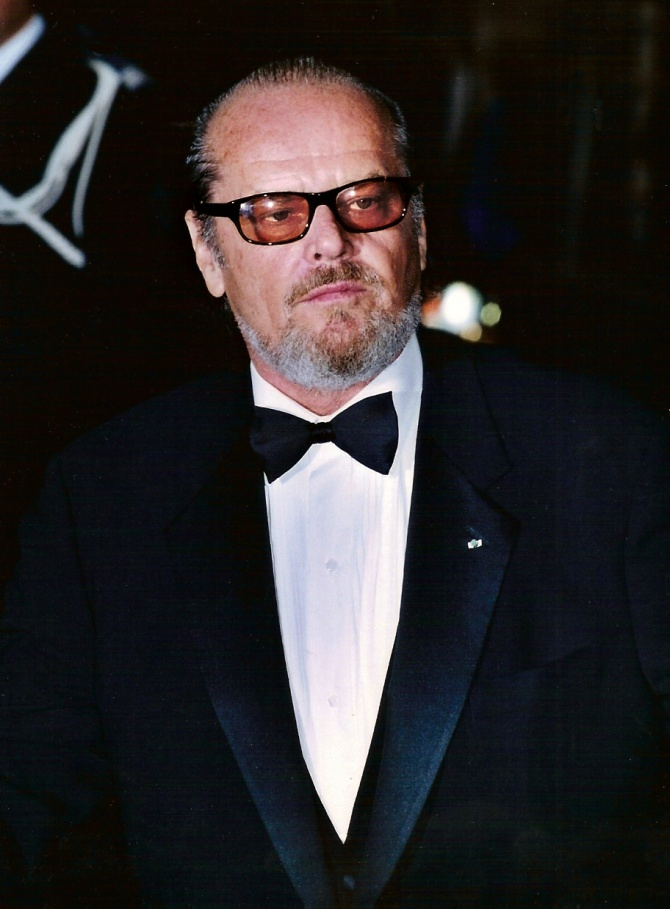
6. **Jack Nicholson – *Batman* (1989)**
Stepping into the white face paint in Tim Burton’s 1989 *Batman*, Jack Nicholson was tasked with defining the Clown Prince of Crime for a generation. Crucially, Nicholson was the first actor to play the Joker “with no real precedent outside of the comics,” distinguishing his performance from those who would follow. He presented his Joker as a “performance artist,” a murderous individual who viewed the entire world as a grand, twisted prank. This imaginative interpretation laid essential groundwork for the character’s transition from comic panels to the big screen.
Nicholson’s take oozed charisma, delivering “devilish charm and harsh violence in equal measure.” He became renowned for his “king of one-liners,” each delivered with a sinister glee that made him utterly captivating. The visual aspect of his Joker, complete with a “nightmare-inducing” smile prosthetic, amplified the character’s unsettling nature, ensuring he was a terrifying, yet mesmerizing, presence that dominated every scene he graced.
Despite some initial sentiment that he was “just Jack Nicholson in makeup,” his commitment to the role and the unique essence he brought were undeniable. He made his Joker “feel like a comic book character come to life,” a testament to his ability to embody the theatricality and inherent evil of the villain without having to explicitly articulate a complex worldview. He played “to the cheap seats while knocking them dead. Literally.”
Nicholson’s performance was so commanding that it often made Michael Keaton’s Bruce Wayne appear almost subdued in comparison. The actor visibly “never had more fun with a role than here,” and that infectious energy translated directly to the screen, elevating the entire film. His iconic portrayal is a prime reason why Burton’s *Batman* is still celebrated as “one of the best superhero movies of all time.”
While a return for a dream sequence in a shelved sequel was considered, it is arguably for the best that Nicholson had just one outing. His Joker remains “one of a kind, unique in the annals of the character and in the actor’s filmography,” a definitive benchmark that demonstrated how a legendary actor could fully immerse himself in the chaos of the Joker.
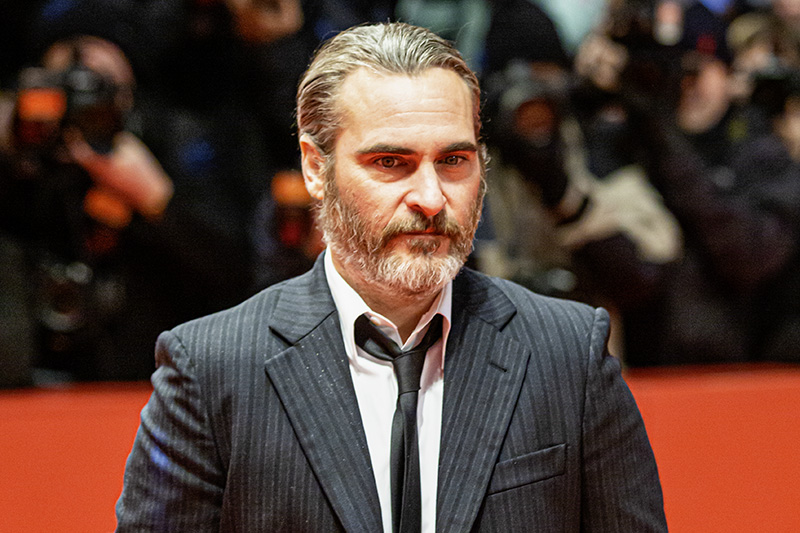
7. **Joaquin Phoenix – *Joker* (2019) / *Joker: Folie à Deux* (2024)**
Joaquin Phoenix’s portrayal of Arthur Fleck in 2019’s *Joker* garnered him a Best Actor Oscar, marking a pivotal moment for the character. His performance stands out for having “by far – the most breathing room to explore the character’s psyche,” a luxury few other actors in the role have enjoyed. Phoenix delved into Fleck’s troubled mind “with such wide-eyed terror,” offering a uniquely sympathetic yet disturbing origin story for the iconic villain.
This iteration presents a “sad sack Joker, a big incel boy,” a departure from the suave showman or pure agent of chaos often seen. Phoenix’s exceptional “physicality and awkwardness is pretty mesmerizing,” as he contorts himself and embodies a deeply disturbed individual. His “shrill, piercing laughter” became a signature element, often masking a profound pain and a character who seems to blame “society’s ills for the killer clown’s origins.”
The film and Phoenix’s performance sparked “unending Discourse” upon its release, with some critics finding it a “cartoon version of a crazy person.” This perception was partly fueled by director Todd Phillips reportedly giving Phoenix considerable freedom, “letting the actor do whatever he wanted.” Consequently, the performance is characterized by an “endless series of tics and twitches,” where “intermittent bursts of laughter represent the most controlled part of his performance.”
Despite these criticisms, Phoenix “dives into the role with gusto,” creating an immersive experience of a man’s descent into madness. His take, while not having the “instantly iconic status of Ledger or the body of work of Mark Hamill,” offers a “definitive full stop on the character” for many, presenting a psychologically driven origin.
The return of Phoenix as Arthur Fleck in 2024’s *Joker: Folie à Deux* ensures his portrayal remains a current and evolving part of the Joker’s legacy. This continued exploration adds another layer to his character, compelling audiences to reconsider how his portrayal might “enrich” or “change anything” about his initial, Oscar-winning performance, ensuring his place in the top echelon of Joker actors.

8. **Mark Hamill – *Batman: The Animated Series* / *Batman Arkham Series**
For many, the definitive voice of the Joker belongs to Mark Hamill, whose iconic performances across *Batman: The Animated Series* and the *Batman Arkham* games have cemented him as the “Clown King.” Hamill “simply gets the Joker like no other,” making him the benchmark against which all other vocal portrayals are measured. His enduring appeal stems from his ability to play “multiple notes, often at once,” effortlessly shifting between comedic timing and genuine menace.
Hamill’s vocal control is truly unparalleled, making his voice “slick and oily; it is giddy and giggly; it is furious.” He can send the Joker’s voice “up into a reedy nasally whine or down into a gravelly pit” in a split second, a mastery of instrument that few can rival. This fluidity allows him to deliver both a “corny one-liner and a punch” with consistent believability, ensuring the disparate tones feel inherently part of the same complex character.
His extensive tenure as the Joker, spanning “nearly a quarter of a century,” allowed for significant character evolution. Hamill’s Joker wasn’t merely a static villain; he developed into a truly “nasty piece of work,” particularly evidenced in flashbacks within *Batman Beyond: Return of Joker*, where his darker side profoundly impacted Jason Todd.
Hamill’s versatility is highlighted through the myriad personas his Joker adopted, from establishing a “grotesque nuclear family in Mask of the Phantasm” to acting as a “jolly holiday host in ‘Christmas With the Joker'” or a “suave businessman in ‘The Laughing Fish.'” This adaptability demonstrated a Joker who almost tries to be “a regular person, but it always gets refracted into something upsetting and strange.”
It’s a testament to Hamill’s genius that “Joker, not the main character in a genre-defining blockbuster, is Hamill’s signature role.” When one imagines the voice of the Joker, it is “guarantee[d]” to be Hamill’s distinctive cackle and chilling growl that comes to mind, a legacy of vocal artistry that remains unmatched and continues to influence subsequent interpretations.

9. **Heath Ledger – *The Dark Knight* (2008)**
Heath Ledger’s posthumous Oscar-winning performance as the Joker in Christopher Nolan’s 2008 film *The Dark Knight* is unequivocally “groundbreaking and iconic,” widely regarded as the “definitive Joker.” Ledger fundamentally “broke the mold with his radically different take,” elevating the character to unprecedented levels of menace and psychological depth. He dialed “all of the menace and chaos up to eleven,” yet brilliantly retained the character’s inherent “showman’s flourish” and unnerving “comedic timing.”
Ledger performed a veritable “magic trick” on screen; he created a “force of destructive nature” that terrified audiences, even though he “visibly spills no blood on screen.” His Joker refused to settle into a single mode, effortlessly veering “between theatrical glory hound to old-school mob enforcer, to mental illness victim.” What made this truly extraordinary was that “Ledger plays each version with complete sincerity, as if he’s finally discovered his “true” self and all the rest are just masks he puts on.”
The performance is replete with moments that have become indelible in cinematic history. From the “continual reinventions of his scarred origins” to the “daring opening bank job” and the snarled “Why so serious?,” Ledger crafted scenes more iconic than many actors achieve in an entire career. His “pièce de résistance,” the interrogation scene with Christian Bale’s Batman, showcased a breathtaking clash of ideologies and raw intensity, with Ledger’s Joker getting “under Bats’ skin better than most.”
A significant part of the belief Ledger instilled in viewers came from how much “fun” his Joker appeared to be having. There was the “delighted giggle he releases when his henchman gets zapped by Batman’s mask” and the palpable enjoyment he displayed even in the face of danger. He made audiences believe him when he claimed “he doesn’t have a plan,” even as they watched him execute meticulously orchestrated schemes, and believed him when he clapped for Commissioner Gordon’s promotion.
Ledger’s portrayal was “fun, frightening, and chaotic,” completely redefining the character in such a profound way that “no one—in movies, TV, or comics—can get around.” His untimely passing tragically cut short a brilliant career, but his legacy is “intact thanks to this completely captivating performance,” leaving behind a Joker that “may never be bettered,” securing his position at the pinnacle of this esteemed list.
Read more about: From Brat Pack Rebel to MCU Icon: The 12 Unforgettable Roles That Defined Robert Downey Jr.’s Phenomenal Career
The Joker’s enduring appeal lies in his chaotic nature and the constant reinvention he allows. From the pioneering theatricality of Cesar Romero to the unhinged brilliance of Heath Ledger, each actor has contributed a unique brushstroke to the canvas of this villain’s identity. These diverse interpretations not only challenge our perceptions of good and evil but also push the boundaries of performance, ensuring that the Clown Prince of Crime will continue to haunt Gotham’s alleys—and our imaginations—for generations to come. The debate over who truly captures his essence will undoubtedly rage on, a testament to the Joker’s timeless power and his unforgettable legacy in the annals of pop culture.



